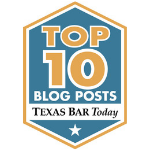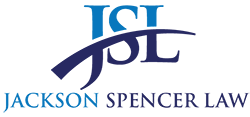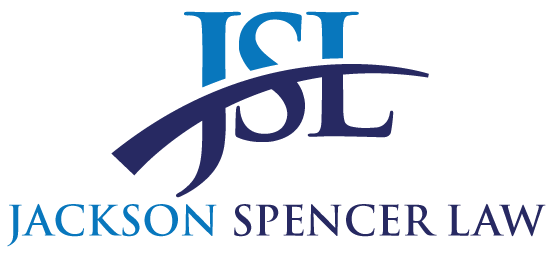The Families First Coronavirus Response Act (FFCRA) went into effect on April 1 and the U.S. Department of Labor (DOL) gave employers until April 18 to comply with the law, after which employers who fail to comply will face DOL enforcement actions and could be subject to individual lawsuits.
 Attorneys who represent both employees and employers alike are predicting a rapid upswing in FFCRA litigation and enforcement action in the coming months.
Attorneys who represent both employees and employers alike are predicting a rapid upswing in FFCRA litigation and enforcement action in the coming months.
According to the DOL, the FFCRA’s paid leave provisions may be available to as many as 61 million workers, a significant percentage of the American workforce. Unfortunately, there has been considerable confusion and uncertainty about what is expected of businesses and workers at this time. Even the DOL has updated their guidance documents no less than 3 times since the FFCRA was signed into law. Their most up-to-date guidance document can be found here.
While employers are forced to constantly update their policies to comply with local, state, and federal guidelines, it’s up to employees to navigate these changes. For employees, that only adds unpredictability to an already challenging situation. Combined with the complexity of instituting telework policies, technological training, and a general lack of predictability in virtually every marketplace – legal compliance is likely to face some hurdles.
Ambiguous Rules Could Lead to Lawsuits
Given that the DOL has had to amend their own guidance documents, it’s clear that the quickly drafted law is not easily understood. There are a number of ambiguities and broad categorical definitions that will probably need to be clarified though litigation.
As employee rights lawyers, we’ve witnessed this problem time and again. Unclear laws lead to confusion and are rarely implemented consistently. This means different employers (and even different lawyers) may interpret the law differently. When there’s room for more than one interpretation of a regulation, there’s a strong likelihood of lawsuits.
Here are some of the most confusing elements of the FFCRA that we believe will lead to lawsuits over the coming months:
Exactly Which Employers Must Comply with the FFCRA?
Generally speaking, the FFCRA applies to business with 500 or less employees. Certain employers with less than 50 employees may be exempt from compliance – but that exemption is not automatic. Businesses who want to use the small business exemption must document why their business meets certain criteria, and, specifically, how compliance would “jeopardize the viability of the business as a going concern.” So, if your employer believes they are automatically exempt from FFCRA compliance because they have less than 50 employees, they could be setting themselves up for a potential lawsuit.
At the same time, the 500-employee threshold for FFCRA compliance is also likely to come into question. Some employers may try to claim that workers are “contractors” and not employees, which poses a legal question in and of itself (because there are rules that define contractors and employees). On top of that, will contractors count as employees for FFCRA purposes? The answer is not exactly clear at this time and will likely have to be determined by courts.
Also, if an employer that would otherwise have more than 500 employees furloughs a significant number of their workers, will they have to comply with the FFCRA? This is another legal question that lacks a clear answer at the moment. Only time will tell.
Exactly Which Employees are Covered by the FFCRA?
This is a huge, multi-part question that has gone unanswered. One of the biggest ambiguities of the FFCRA revolves around the Act’s definition of “emergency responders.” “Emergency responders” are excluded from FFCRA protections and the Act goes out of its way to broadly define employees within this category. The Act defines emergency responders as “anyone necessary for the provision of transport, care, healthcare, comfort and nutrition of such patients, or others needed for the response to COVID-19.”
According to the DOL, this includes “military or national guard, law enforcement officers, correctional institution personnel, firefighters, emergency medical services, personnel, physicians, nurses, public health personnel, emergency medical technicians, paramedics, emergency management personnel, 911 operators, child welfare workers and service providers, public works personnel, and persons with skills or training in operating specialized equipment or other skills needed to provide aid in a declared emergency, as well as individuals who work for such facilities employing these individuals and whose work is necessary to maintain the operation of the facility.”
Obviously, this is an exceptionally broad range of workers. It is highly likely that there will be litigation over which employees actually fall within the definition of emergency responders.
Are employees eligible for FFCRA paid leave if they are under a governmental stay-at-home (or shelter in place) order?
The gray area here is that the FFCRA provides paid leave and other protections to employees who are under governmental quarantine or isolation orders, which are terms not defined in the FFCRA, and the DOL has not provided guidance on if that includes stay-at-home (or shelter-in-place) orders. Regardless of this, the FFCRA would still apply if an employee must stay at home because of a doctor’s order, or to care for a child whose school or daycare has been closed in response to COVID-19.
However, the DOL has said that “where an employer either does not have work or has been required to close its workplace due to the COVID-19 pandemic, it is not required to pay its employees FFCRA paid sick and family leave benefits.” If employees are off work due to a furlough or closure of their worksite, even if the closure was pursuant to a Federal, State, or local directive, they are not entitled to FFCRA benefits. Presumptively, this is where unemployment insurance should apply, but this will probably be hotly litigated because ambiguities still remain.
Essentially, the DOL suggests that employers are required to provide FFCRA leave benefits to workers subject to quarantine or isolation orders only where the order impacts the employee but not the employer (e.g. if an employee must stay at home even if they work for an “essential” employer). But employers may not have to provide FFCRA leave if they offer telework for employees who are home but able to work.
Can both parents take FFCRA leave to care for a child who is unable to attend school or daycare?
This question will likely have to be answered on a case by case basis, such as whether both parents are also teleworking, if the child has special needs, and other family circumstances like split custody agreements.
What Employees Need to Know About FFCRA Lawsuits
There’s both good news and bad news about FFCRA lawsuits. On the plus side, the DOL has confirmed that individuals can bring cases for sick pay through collective action – meaning multiple employees can sue the same employer together (similar to a “class action” suit). Not only are the standards more lenient for employees to meet than a traditional class action, these types of lawsuits often lead to higher dollar penalties.
On the other hand, lawsuits over unpaid leave can be slow-moving compared to other forms of litigation (and will probably be even more slow than usual since many courts are shuttered and claims are piling up).
Another Sticky Issue: the WARN Act
The Worker Adjustment and Retraining Notification (WARN) Act may also come into play in the upcoming weeks. The WARN Act requires large employers to provide 60 days-notice to employees prior to business closing or mass layoffs. Employers that don’t comply could be held liable to each affected employee for up to 60 days’ worth of backpay and benefits. While employers may be able to successfully claim “unforeseen business circumstances” for layoffs in March, layoffs that have occurred in late April (and afterward) could have reasonably provided 60 days-notice to employees.
Bottom line: if your employer closes their business or institutes mass layoffs in May without providing employees with 60 days prior notice, they could be looking at a WARN act violation.
Is Your Employer in Compliance?
The attorneys at Jackson Spencer Law fight for the rights of Texas employees – and now, more than ever, we’re here to help navigate these uncertain times. Whether you need help with unemployment compensation claims, unemployment denial appeals, or would like us to review documents from your employer to ensure they’re complying with new regulations – we can help. Contact our office today for more information.



